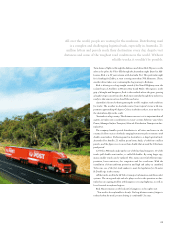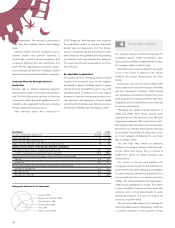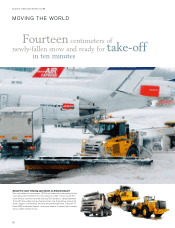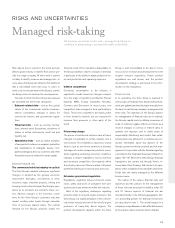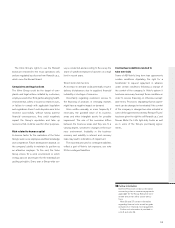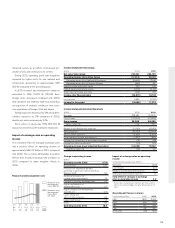Volvo 2010 Annual Report Download - page 53
Download and view the complete annual report
Please find page 53 of the 2010 Volvo annual report below. You can navigate through the pages in the report by either clicking on the pages listed below, or by using the keyword search tool below to find specific information within the annual report.
Volvo Group Sustainable Report will
be available on www.volvogroup.com in
mid-April.
Volvo Group’s environmental
performance For information on the
Volvo Group’s environmental perform-
ance see the Eleven-year summary.
Production
The environmental effort is and has long been
one of the cornerstones in the Group’s work. The
joint environmental policy is one of the most
important documents for control. The policy is the
foundation of the Group’s environmental man-
agement system, strategies and targets, audits
and measures.
Already in 1995, the first environmental man-
agement system was certified. At the end of
2010, 96% of the employees in production units
were working in accordance with the certified
environmental management system, primarily
ISO 14001:2008. At each production unit, there
is an environmental coordinator.
The Group’s environmental goals are used to
control, develop and monitor the environmental
effort. Strategies to achieve the goals are
included in the business plan. During the 2004–
2008 period, the Volvo Group focused on energy
reduction in its own production process. Energy
consumption decreased during the period by
43% per produced unit.
The energy-saving goal for 2010–2012 is
divided into two parts:
• Continue the work with investigating the possi-
bility of making the Group’s facilities carbon-
neutral.
• Standby loss, i.e. energy consumption during
non-production hours, must decrease by 50%
and an additional 15% energy-saving per pro-
duced unit by 2012, compared with 2008.
Focusing on energy-savings measures is good
for both the environment and the Group’s finan-
cial results. A couple of years ago, when the Volvo
Group launched the world’s first carbon-neutral
plant, the primary reason was to reduce the envi-
ronmental load, but it soon became quite clear
that it was also a solid financial investment, which
will generate significant cost savings in the long
term.
All production plants must comply with the
common minimum requirements pertaining to
chemicals, energy consumption, emissions to air
and water, waste management, environmental
organization and improvement work. Since 1989,
environmental audits have been conducted to
ensure compliance with the environmental policy
and in the event of acquisitions, a review is con-
ducted of the company and properties to observe
environmental factors and risks.
In 2010, there were 17 facilities in Sweden that
required permits. All have the necessary environ-
mental permits and no permits needs to be
renewed in 2011. The existence of contaminated
land in our properties is documented annually.
During 2010, the after-treatment of contami-
nated land was in progress on one property.
These have historical origins. During 2010, no
spills were reported, no major environmental inci-
dents occurred and no environmental disputes
are ongoing.
culture, there is a strong focus on responsive-
ness, agility and the ability to execute with speed.
Truly making the organization more efficient,
demands further developing employee engage-
ment and commitment to the company’s strategic
objectives for future business success.
To be involved means that we take individual
responsibility for decisions. This employee
engagement results in a strong driving force to
meet agreed objectives and goals. All of us feel
accountable for driving improvements and build-
ing the future. Only engaged employees can
deliver the highest quality and efficiency.
During the first half of 2010, the new Volvo
Way was disseminated to all employees by their
immediate manager. Nearly two out of three
teams have identified local improvement actions.
To build a high commitment and high perform-
ance working culture will require continuous
attention and support by management. The result
is a more resilient organization.
We are convinced that a cohesive culture
based on global values strengthens our brands
and makes Volvo Group a more attractive
employer, business partner and industry leader.
49






